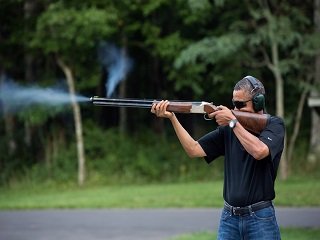 As hunters, we have a lot of responsibility when it comes to following rules and representing all other hunters in our actions. However, being a hunter requires a lot more than just good stewardship and being generally responsible; it requires extra skills and abilities. Here are some tasks that every hunter should master.
As hunters, we have a lot of responsibility when it comes to following rules and representing all other hunters in our actions. However, being a hunter requires a lot more than just good stewardship and being generally responsible; it requires extra skills and abilities. Here are some tasks that every hunter should master.
Tracking and Trailing Wounded Game
Every hunter has experienced that stressful period of time that exists between shooting a game animal and recovering an animal. It can be tense but if you follow some simple rules, it can be less extreme of an experience. For starters, always wait at least 30 minutes to recover an animal that is mortally hit in in the vitals. Even if your shot was a sure thing, you have nothing to lose by waiting half an hour.
If you are dealing with a gut shot or shot a little too far back, wait at least four to five hours before attempting recovery. I like to leave gut shot deer alone until the morning. It is always easier to look for blood during the daylight hours and waiting out the night assures plenty of time for a deer’s injuries to either do the job or dissipate so that the deer can live another day.
When trailing blood always mark your last spot, drop or smear. If you run out of blood and cannot follow or get on the tracks, then slowly make a small circle. If you do not get back on blood, make a larger circle and repeat the process. Always keep at least the last few blood spots marked as this will point in the general direction the animal is traveling.
If you have two people, have one stand at the last blood spot and the other make the circle. It is always a good idea to have the most experienced trailer on the blood. Never just walk around hoping to get lucky. You will no doubt ruin or miss some blood or sign that is important and luck should only come into play after you have exhausted all other means.
How to Safely Handle a Firearm
This might seem like a no-brainer but the NRA has three simple rules for safe firearm handling and they are always worth repeating. Always point the gun in a safe direction. Always keep your finger off of the trigger until you are ready to fire. Always keep the gun unloaded until ready to use.








